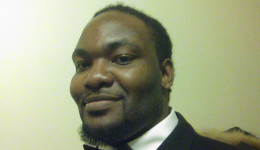James W




Instruments: Piano, Organ, Music, Keyboard
Styles: Classical, Jazz, Pop, Blues, Folk, R&B, Gospel, Musical Theater, Latin, Funk, Hip Hop, Spirituals, Reggae, Swing, Samba, Bossa Nova, Soul


James W



Instruments: Piano, Organ, Music, Keyboard
Styles:
Classical, Jazz, Pop, Blues, Folk, R&B, Gospel, Musical Theater, Latin, Funk, Hip Hop, Spirituals, Reggae, Swing, Samba, Bossa Nova, Soul
Where I Teach:
In Your Home
My Studio
Online
Ages Taught: 10-80
ABOUT
Degrees / Training / Special Info:
Bachelor Degree: Morgan State University
Overview:
I discovered my love for music at an early age. Though I started in the children’s choir at church, I began playing the piano by ear at the age of 9. Formal training is due to Morgan State University, which I am scheduled to graduate December 2019. My favorite thing about music is the power it holds and the ability to share experiences and emotions. Teaching the arts is amazing to me because it allows an opportunity to empower another to creatively share their story. In addition to imparting knowledge, teaching also (and often) makes me a student again. Even years of experience does not exempt one from a fresh enlightenment.
EXPERIENCE
My teaching experience teaching private lessons dates back about 10 years. Before private lessons, I taught voice and piano to people of all ages in church. I believe that practicing consistently will produce the greatest results and always encourage my students to do so. Practice is not just about playing scales and chords, or singing warm-ups and Arias, but it is an opportunity to learn more about yourself and your instrument. The better you know your instrument, the easier it will be to create and express yourself.
METHODS USED
I believe a good foundation is important to be a successful musician, regardless of the level of application. With this in mind, each student will have access to theory, ear training and they will build technique through intervals, scales, chords, etc,... Every concept will present an applicable piece to reinforce the knowledge.
For example, younger kids will be introduced to Solfege, utilizing the Curwen hand signs. Then we introduce the treble clef. We begin using fixed DO, on Middle C, and will ascend a Major scale (DO-RE-MI-FA-SOL-LA-TI-DO). This can be utilized as a basic beginner lesson in sight-reading.
LESSON STYLE
The goal is to supply students with the tools and the knowledge to be successful and also to facilitate an environment of growth. As we progress through lessons, I will challenge students with weekly and even monthly goals. I've realized every student has a different way of learning, and the methods will cater to the individual. For instance, students who learned mostly by ear can learn about theory. We can begin by identifying whether a scale is major or minor, but first we need to know that major generally sounds brighter/happy and minor usually sounds darker/sad. After determining scales, we will graduate to the different types of triads, or 3 note chords. Reinforcement of this information can be listening to a few songs (of the student's choice) and selecting major or minor.
PHOTOS & VIDEOS
Leave a Review
Leave a Review
RATING & REVIEW

